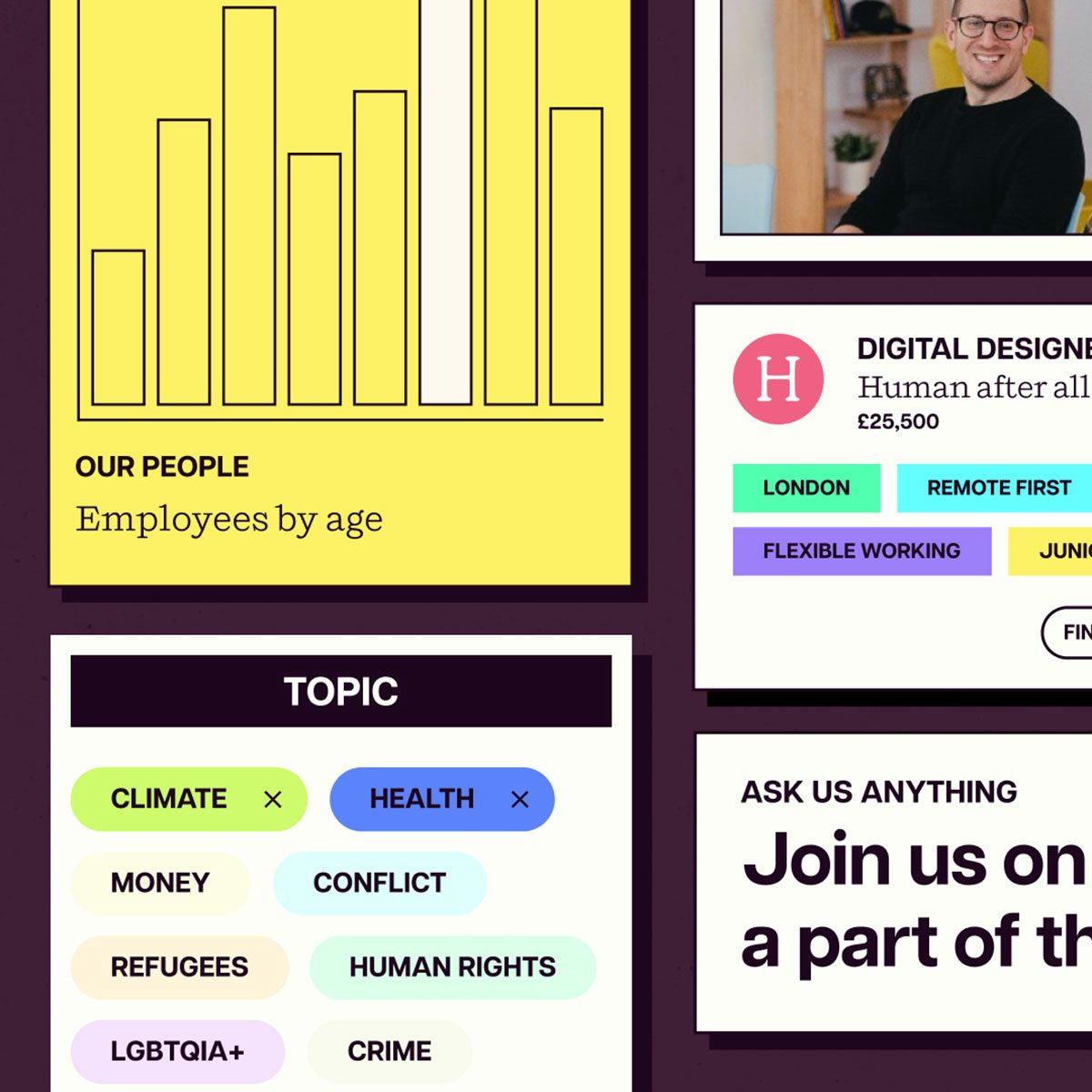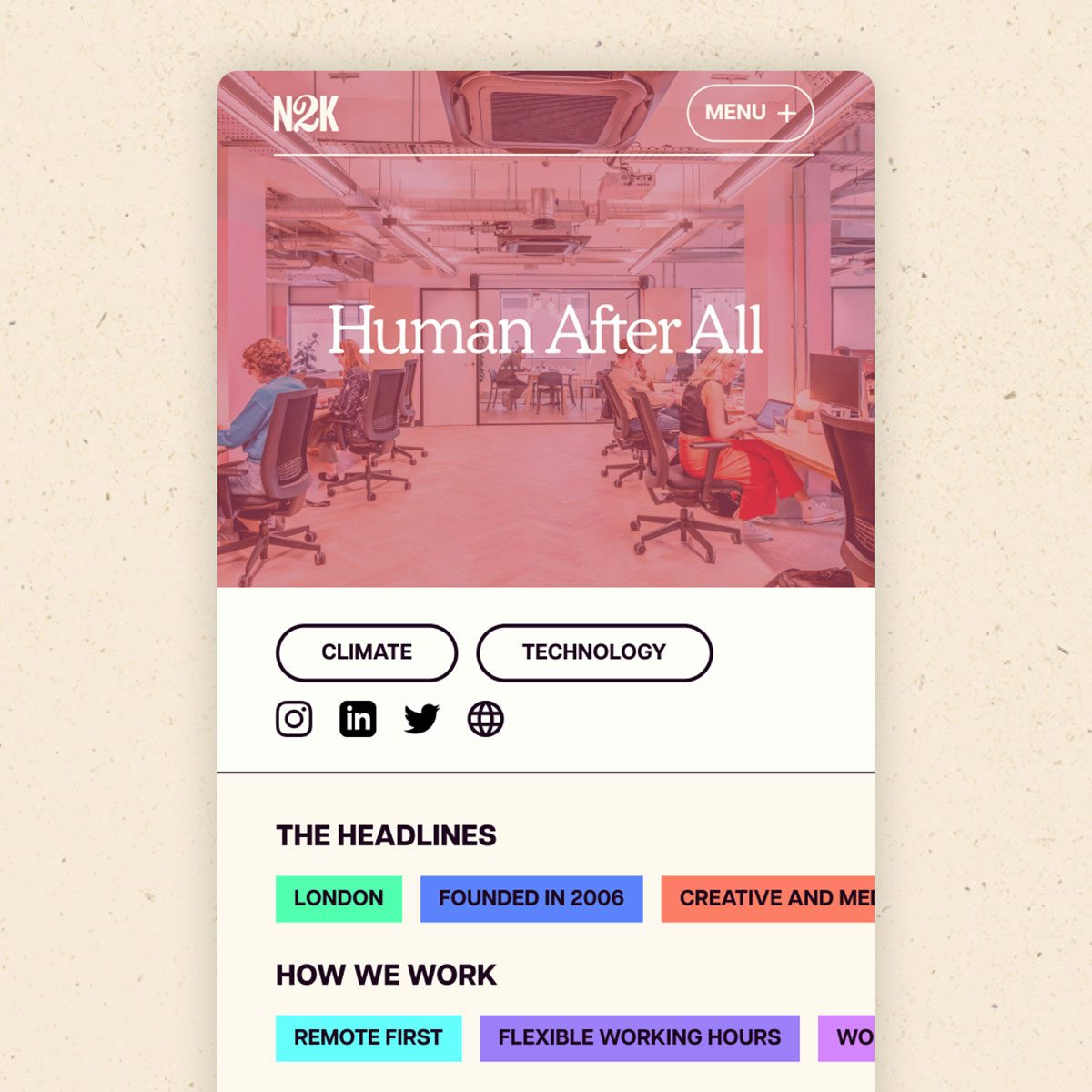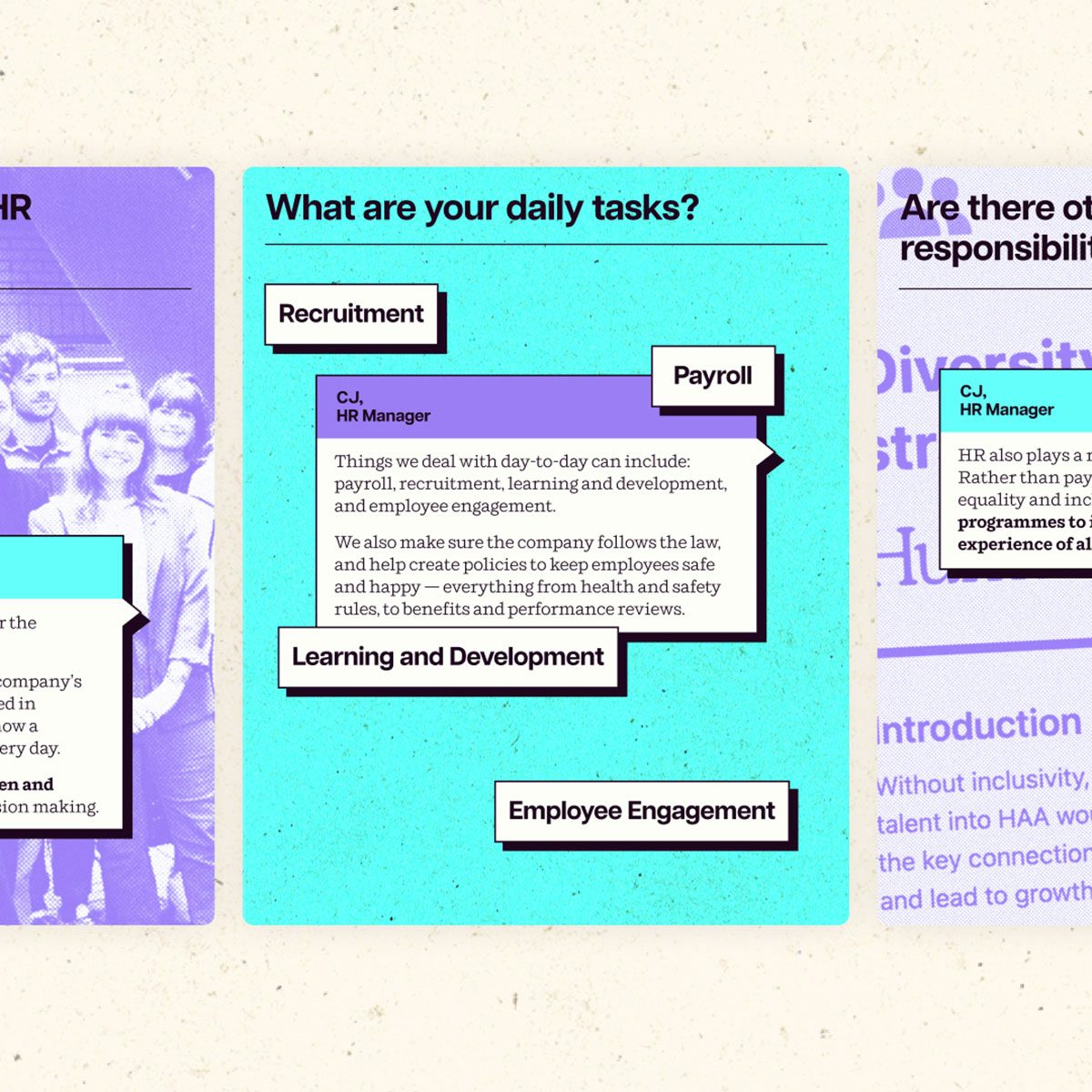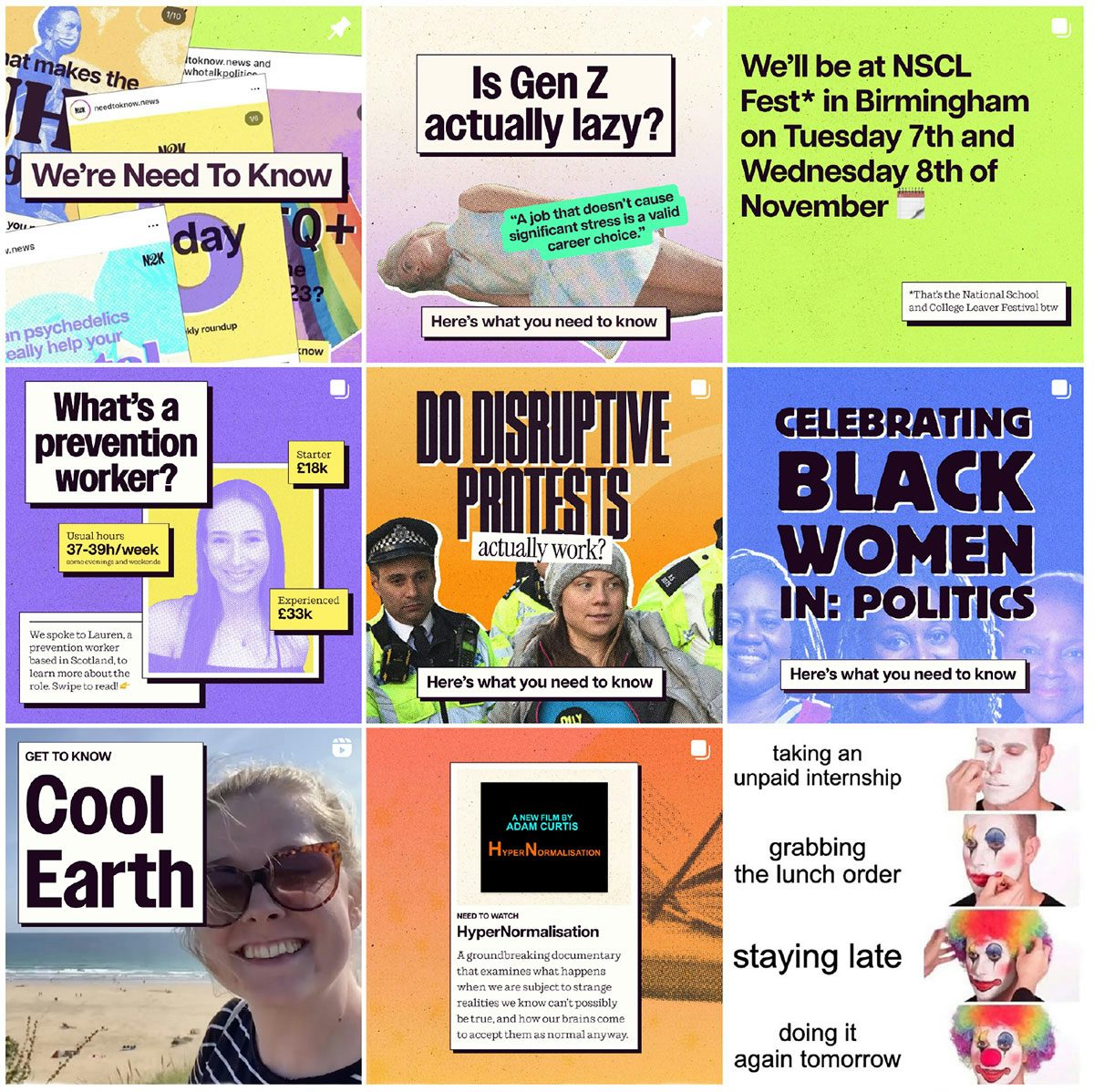How design can help reach Gen Z on social
Need to Know is a new platform started by agency Human After All which aims to help Gen Z find careers they care about. Here Danny Miller explains the power of using social media as an editorial canvas for news, facts, and advice
“Young people don’t seek out news or have loyalty to news media brands in the way previous generations have done,” says Danny Miller, co-founder and CEO of design agency Human After All, which partners with those making a positive difference in the world. “Instead, news finds them – in places where they already are, which right now are spaces like TikTok and Instagram. News is naturally more digestible there – shorter form and immediate.”
For Miller this fits in with the ways a younger, socially native demographic has grown up consuming information, and it’s one of the reasons he and his team set up Need to Know, a platform that aims to help young people find careers they can care about, which officially launched in September.
“Our entry point is news media on Instagram – it’s looking at what’s happening in the world and saying ‘if this moves you, if you’re engaged by this, then here are things you might want to do in your life that can bring you close to it’,” explains Miller. “So the gap we hope to fill is in being something that young people can discover themselves, trust, care about, respect, and then translate that engagement into positive career outcomes for them.”

The next generation is increasingly conscious of the impact of their work both in their lives and the world around them. Miller says it’s not about working less, but more about them wanting to work less harmfully, and he sees Need to Know as being able to facilitate connections between the things that matter and the way they act in the real world. The team felt there wasn’t anyone else really making this connection so it’s been about “channelling the passion and drive” young people have into something more tangible.
“By connecting news, and helping young people understand what is happening in the world, to actual jobs they can do, we’re seeking to empower them,” Miller says. “Not only to find purpose in their own work, but to be better future leaders and change how the world works.”


While Need to Know has a website, a lot of its content lives on social media, namely Instagram, and this is simply because that’s where their audience is. On its page there is an abundance of simply designed, easily digestible news carousels, insights into job roles (that go beyond just the creative industry), and explainers on world events and happenings.
“Both Instagram and TikTok – arguably more so TikTok, which is capturing a larger percentage of 15-16 year olds – are powerful places for news publishers to connect with new audiences,” notes Miller. “Both platforms offer powerful video tools for creators to produce content that is low fidelity, but entirely authentic and captivating. If Instagram and TikTok can keep offering new tools, growing gigantic audiences, and nurturing creators then it follows that an abundance of great content in all areas will develop on those platforms – and news is just one strand of that.”
What’s interesting to Miller is that a lot of Instagram’s features are pretty basic slideshows and carousels, but he sees this as allowing individuals or organisations to create a sense of authenticity. “It puts the emphasis on what people are saying – on their uniqueness. Looking at what storytellers are doing on Instagram, it’s an interesting mix of flat graphic design across carousels, and video content on reels. Some of the best publishers are bringing that mix together nicely.”

Brands and organisations Miller cites as doing it well, for a variety of audiences, are established news orgs like the New York Times and the Atlantic, but also smaller, activist brands such as Future Earth, Progressive International, and Shit You Should Care About. “It’s not easy to define a specific approach that’s successful, which is kind of the peculiar result of the platforms,” Miller says. “The barrier to entry for publishing and growing a community on Instagram or TikTok is insanely low – which means that more people can have a crack at it, and then we as onlookers can come to see who’s work resonates and builds an audience.”
The differences seem to be where these platforms ultimately want you to end up. For instance, the larger media orgs like NYT are using a mix of written, video and photographic content on their social channels but ultimately they want people to go back to their website. Whereas other brands such as Impact or Future Earth are social-first and Miller says it shows. “You can definitely see them experimenting more rapidly, not being afraid to use low fi approaches, and importantly they can keep all their content on the platform and tell end-to-end stories there.”
View this post on Instagram
Recently, video content has been the favoured medium by the algorithm, but despite that Miller says they’re motivated to treat Instagram as an editorial canvas and play around with copy and design across carousels. “It’s too early to say if this is ‘working’ exactly but we’re pleased with how things are looking,” he notes. “We’ve also tried producing short, more ‘newsy’ reels which might simply be a four-second looping video with a quote, and data visuals. These are being received well, and are far more likely to hit Insta’s algorithm and get seen by those who don’t already follow us.”
The key to making news carousels work is all in the first slide or image, especially as it’s the visual served to people coming across the content organically. “Our approach is that the reader immediately moves from a bold, typographic opening slide to a series of clear, readable slides that can convey complex information with clarity,” Miller explains.

To further ensure success design wise, Miller says they’ve put an emphasis on authenticity and individuality to appeal to Gen Z. Anything too polished can be perceived as untrustworthy as they have a better awareness of how the media “constructs and manipulates” narratives.
So rather than having strict visual guidelines, Need to Know has three brand foundations which inform the design of its content. The first is ‘pluralised personalities’, which recognises young people being “whoever they want in as many ways as they wish” and so the platform’s design direction emulates this by being fluid and adaptable. The second is ‘unapologetic optimism’. “The world got caught up in negative trends and stories that revolved around dark narratives,” says Miller. “Gen Zers are rejecting the dark future with unbridled, unapologetic positivity.”
The last building block is ‘lo-fi aesthetics’ which for Need to Know touches upon “Gen Z favouring an image culture that is more about showing the authentic you, than framing yourself in the best way possible”. As a result, print-like textures, a pick and mix of different typefaces, and punchy colours feature across the visual branding of the platform.
View this post on Instagram
As with anything, there are limitations in applying elements of editorial design to Instagram but for Miller it’s about understanding the boundaries and finding a creative way around them. “Our team has spent decades designing books and magazines, and to take that editorial approach down to a tiny digital canvas has been really interesting,” he says. “Certainly there’s a challenge in condensing stories into around 300 words over ten carousel slides, but it provokes all manner of interesting creative approaches, both visually and verbally.”
As Need to Know is still in the early stages of building its community, Miller acknowledges that finding success on social media is a tricky balance of having a strong voice and visual presence, consistency and sometimes just a bit of luck. “It’s always struck me, looking at those who’ve found an audience on Instagram, that with the barrier to entry being so low, there might be 999 accounts that don’t hit the mark, for every one that does blow up. And maybe you just can’t manufacture that?” he notes.
So instead, Miller and the team aim to fit into a space between posting as an “authentic individual” to be more personal, and established media brands who have more budget, editorial teams and reach. “We feel like this is a great space to occupy but it will take time and experimentation to figure out how we succeed.”




